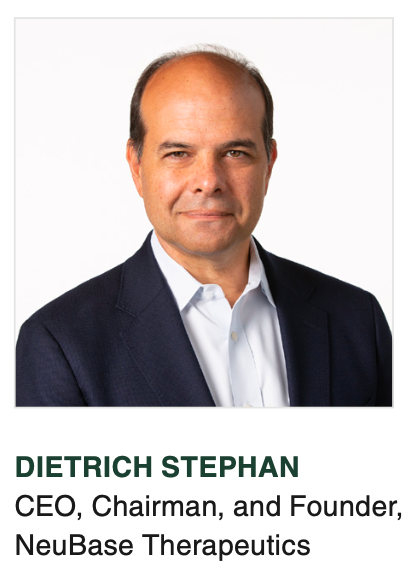The Silver Lining Of Innovation in Genetic Medicine
Failed efforts do not overshadow field’s progress, resolve.

The recent news of Biogen and Ionis Pharmaceuticals ending a clinical trial for their amyotrophic lateral sclerosis drug candidate and Roche’s failed Phase III study in Huntington’s disease (HD) are hard to bear for many families holding on to hope in the face of devastating diseases with limited options. Their drug development journeys underscore the highly challenging nature of tackling rare diseases. As a geneticist, I’ve seen firsthand the difficulties these patients endure. But even in the face of what might seem like failure, there is great progress. New thinking, research, and discoveries are only made possible by those who bravely forge new paths to gain a better understanding of the human body, even when that risk entails failure. Success will come.
The silver lining? Our strategy is sound. There is no doubt that genetic medicines work at addressing root causality in monogenic rare diseases like HD.
Back in the mid-1980s, a group of scientists came together at Alta Ski Resort to investigate whether it was possible to detect increased mutations in the survivors of the Hiroshima and Nagasaki bombings. The conclusion was that current methods were insufficient, yet the meeting spurred an energized response around genetic sequencing that resulted in the federal government funding the multibillion-dollar, multinational, and multiyear project to sequence all six billion letters of the diploid human genome, which resulted in the publication of the draft sequence of the human genome in 2001, years earlier than expected.
In less than four decades since, we have unraveled the blueprint of human life, cataloged the vast majority of mutations in the genetic code, implemented global infrastructure to provide rapid and inexpensive genetic testing to patients and physicians, and have a first wave of genetic medicines saving human lives. This is breathtaking progress.
However, there is still much work to do, with numerous challenges centered on improving the delivery, selectivity, and tolerability of these genetic medicines. We know the medicines work; it is just a matter of getting the therapy to the tissue where the disease manifests, dialing in the selectivity for the gene of interest, and engineering out toxicities.
With HD, patients receive an injection into the spinal cord, but in order for enough of a relatively large genetic medicine to penetrate into the deep brain structures to be effective, the high concentrations of the drug injected at the surface of the brain may result in neurotoxicity.
Rapid advancements in the areas of delivery, selectivity, and tolerability are happening. For delivery, innovations are allowing us to deliver genetic medicines across the blood-brain barrier to allow uniform exposures across all brain regions and not setting up toxic gradients—which has been difficult for large molecules. This method avoids the brain surface toxicity. Since HD is a disease that involves the whole body, delivering a solution systemically via the bloodstream may address the whole-body manifestations of the disease. These new delivery devices are also noninvasive, using either ultrasound or emerging tech, and allow effective administration in a previously impossible manner.
For selectivity, emerging technologies can identify and engage with only the targeted mutated gene. We’ve essentially reverse engineered nature so that the genetic-medicine-to-gene-target interface won’t tolerate any mismatches. The treatment is viewed by the body as a complementary sequence to the mutant gene, yet one that contains a biologically inert chemistry that ensures no off-target engagement. The end result will be clean, highly effective, and well-tolerated medicines.
Because many of these therapies are delivered systemically, they can trigger an immune reaction that renders the medicine intolerable, yet even on this front, we are seeing advancements. By using the body’s own intelligent design, scientists have copied the existing framework and then improved upon it using synthetic strategies that allow for greater tolerance, thereby preventing the normally useful immune response from derailing healing.
We are in the most exciting time in the history of medicine, bar none. The science is dazzling. Patients should feel very optimistic. Cures are coming not in decades, but in a matter of years. The innovation that’s happening today will be the breakthrough therapies of tomorrow. If you are looking for a silver lining, here it is.
Dietrich Stephan, CEO, Chairman, and Founder, NeuBase Therapeutics

FDA Grants Priority Review to Regeneron’s Eylea for Macular Edema Following Retinal Vein Occlusion
April 18th 2025Regulatory action was based on data from the Phase III QUASAR trial, which demonstrated that Eylea HD dosed every eight weeks achieved non-inferior visual acuity outcomes compared to Eylea in patients with macular edema following retinal vein occlusion.
Addressing Disparities in Psoriasis Trials: Takeda's Strategies for Inclusivity in Clinical Research
April 14th 2025LaShell Robinson, Head of Global Feasibility and Trial Equity at Takeda, speaks about the company's strategies to engage patients in underrepresented populations in its phase III psoriasis trials.
New Insights Into T Cell Exhaustion and Inflammation in Long COVID
April 17th 2025Nigel McCracken, chief operating officer, Virax Biolabs, discusses new findings that reveal altered cytokine activity and evidence of T cell exhaustion in long COVID patients, providing deeper insight into post-infection immune disruption.
Key Findings of the NIAGARA and HIMALAYA Trials
November 8th 2024In this episode of the Pharmaceutical Executive podcast, Shubh Goel, head of immuno-oncology, gastrointestinal tumors, US oncology business unit, AstraZeneca, discusses the findings of the NIAGARA trial in bladder cancer and the significance of the five-year overall survival data from the HIMALAYA trial, particularly the long-term efficacy of the STRIDE regimen for unresectable liver cancer.
Amgen’s Imdelltra Demonstrates Significant Overall Survival Improvement in Small Cell Lung Cancer
April 16th 2025In the Phase III DeLLphi-304 trial, patients with small cell lung cancer administered Imdelltra achieved a statistically significant and clinically meaningful improvement in overall survival compared to standard-of-care chemotherapy.